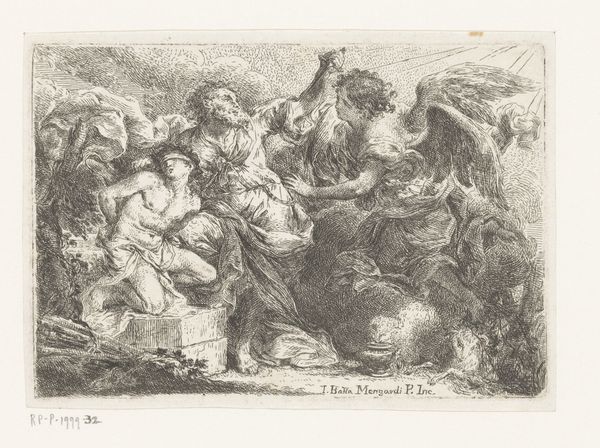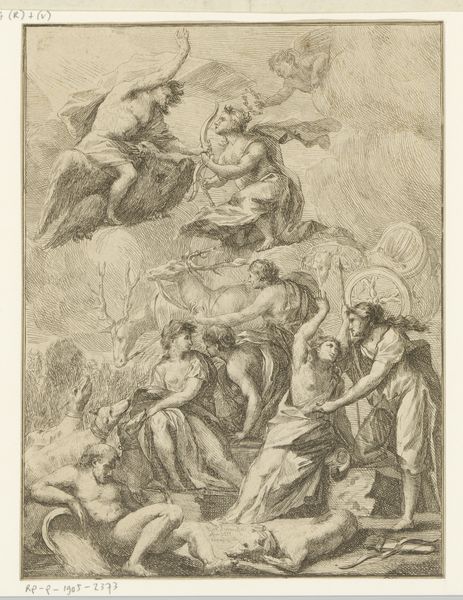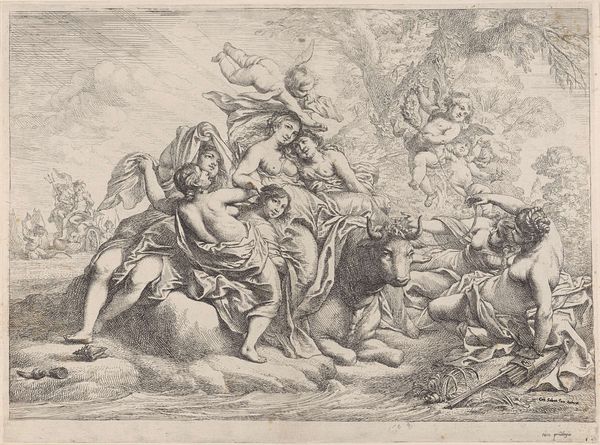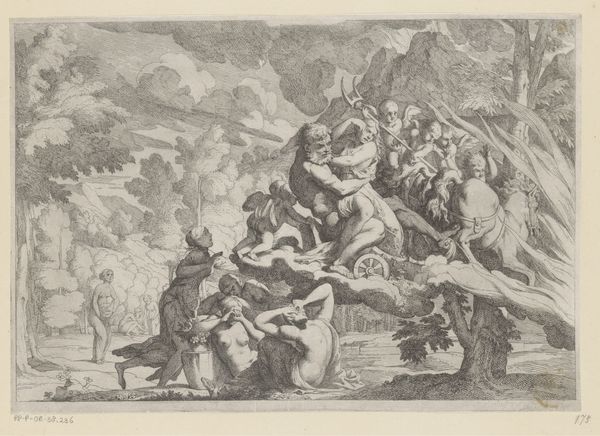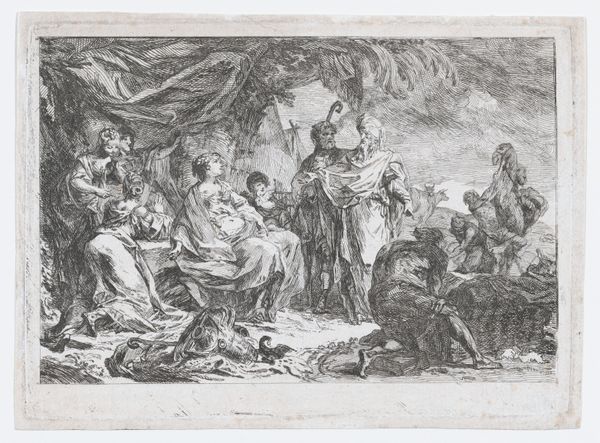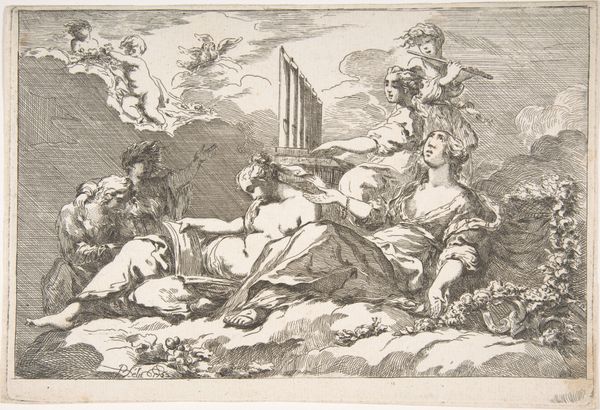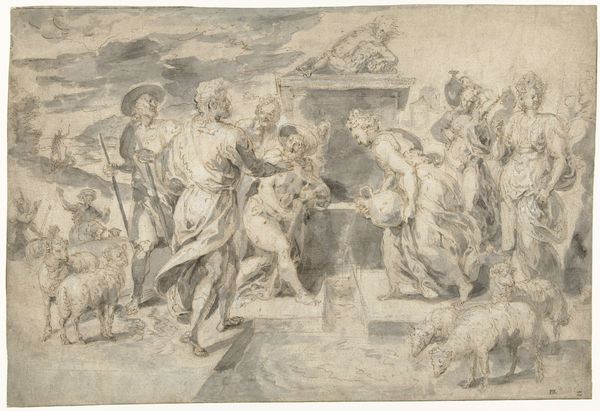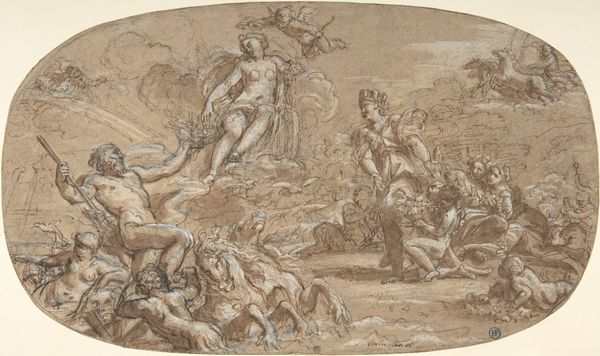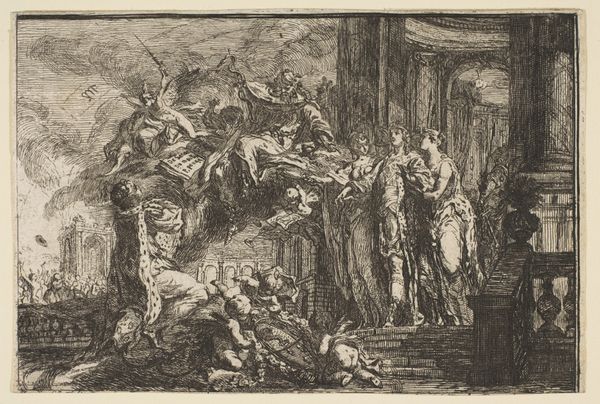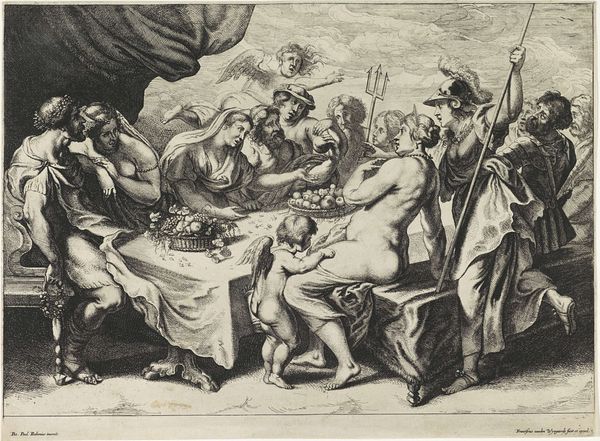
Nymphs Adorning the Statue of a Goddess (recto); River God with Three Nymphs (verso) 1700 - 1800
0:00
0:00
drawing, ink
#
drawing
#
allegory
#
baroque
#
ink painting
#
figuration
#
ink
#
history-painting
Dimensions: 8-15/16 x 11-3/16 in. (22.7 x 28.4 cm)
Copyright: Public Domain
Curator: Welcome. Today we’re looking at an ink drawing from around the 18th century, attributed to an anonymous artist. It’s titled "Nymphs Adorning the Statue of a Goddess" on one side, and "River God with Three Nymphs" on the other. Editor: It's intriguing, isn’t it? My first impression is one of movement. A sort of controlled chaos rendered with subtle ink washes. It looks like the ink almost flows like water on the page. Curator: Precisely. The work is deeply embedded in the traditions of Baroque allegory. Notice how the goddess statue serves as a focal point, emphasizing themes of ideal beauty and divine authority, common motifs during the period. How do you feel the artist is connecting "high" art themes with more earthly labor, perhaps? Editor: Well, the medium itself – ink – would have been carefully prepared, ground, and mixed. And you see this replicated on a bigger scale with the statuary--extraction of the marble, its carving, transport. Beyond that labor, there’s a collaboration of design in its subject matter. How did that subject become deemed "art?" Curator: A potent observation. The composition, laden with symbolism, reflects the artistic and social aspirations of the era. This kind of work helped legitimize aristocratic taste and project an image of cultured power. It reinforces class hierarchies while seeming to celebrate an eternal aesthetic ideal. Editor: You mention class—note the drapery, the floral wreaths: All carefully composed to create a sense of lavish abundance, suggesting that accessing these earthly goods were not an issue for this commissioner. Who was afforded the means of celebrating classical imagery at the time? How does that impact who got to enjoy and dictate the conversation about beauty? Curator: Exactly! We have to think about how these images served to validate the dominance of a specific segment of society. But let’s return briefly to its dual nature, two works in one. What can that tell us? Editor: The material support itself – the paper – and the economic realities of conserving and utilizing space on the page. It highlights that the front and back can simultaneously carry distinct meaning. It complicates narratives, makes you think of hidden messages. Curator: A fitting end-note, really. This drawing offers not just visual delight, but prompts an important analysis of artistic production and reception within particular socio-political structures. Editor: And of course, to contemplate the complex ways labor, consumption, and the pursuit of idealized forms come together through material and artistic practices.
Comments
No comments
Be the first to comment and join the conversation on the ultimate creative platform.
